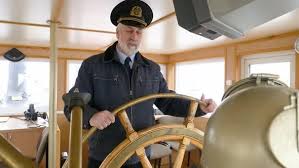#PA-LIFE: Hacks to steer your life and career in the right direction
Sometime around 2009, my mind was opened to a new way of thinking about how the rest of my life, including my career, could look. The first time I read The 4-Hour Workweek by best-selling author and podcaster Tim Ferriss, I was hooked on the concept of “lifestyle design”. I finally found someone who was validating my resistance to the American career status quo, which classically goes as follows:
1) Go to school –> 2) Find a job –> 3) Do the kids/house/dog thing –> 4) Retire from the job after 30+ years –> 5) Enjoy the fruits of your labor.
Although there is joy to be found within that path, I’ve always wondered why we take most our prime years of life (20-60yo) and just blindly follow this asinine schedule. Perhaps I’ve always subscribed to the mindset of Y.O.L.O. (You Only Live Once), even before it went viral, but my professional-life mantra has always been “Work to live, don’t live to work.” I also have known that, upon my deathbed, I will not be saying: “I wish I had worked more.”
I understand this line of thinking is not unique, although there are still plenty of workaholics, of which I am clearly not one. I think many people wish for more time off, less stress, the ability to pursue their passions, and anything that makes them truly feel “alive“. Many professionals fantasize about quitting their jobs and traveling the world, or some other extreme break from their current reality and future prospects. Although a sexy proposition, most people do not have the wherewithal or financial means to make such a binary decision, so I’ll argue that it is more pragmatic to think about how you can cultivate your best life while still maintaining a career. This is why I think that for most professionals, it is best to not abandon work altogether but to keep the constant of a career (which can change over time) while you design your life around that constant. This idea, which I think about as “One foot in (the status quo), One foot out (YOLO mindset)”, is the framework of how I’ve approached the balance of having a career as a PA and living life on my terms. What you should understand is that it IS POSSIBLE to mold your professional life to best meet your goals, priorities, and values.
Since 2009 and my first reading of The 4-Hour Workweek, the idea of lifestyle design has become increasingly popular, mostly related to the rise of social media. There seems to be an endless amount of bloggers, influencers, and people of all ages living #vanlife or some other iteration. Some of these folks are lucky enough to be able to work remotely while still traveling, but it’s been clear from the start that it was just about impossible to work as a PA without being physically present (cross your fingers that with the increased presence of telehealth, we may not be far off from being able to telecommute). Having to work within and around the limitations of a career choice is one of the most important aspects of lifestyle design, although a little imagination can really go a long way in stretching the limits of what you think is possible. Probably the first step of cultivating the #PAlife that you want is to learn the rules of the game, or said another way: Find the boundaries, such as practice laws and contract obligations, so that you know within what limitations you are creating your future life.

If you’ve seen the movie The Truman Show, starring Jim Carrey, then you likely remember how the character begins to question his reality, and eventually sets off to discover what in his world is true and what is false. Eventually, he reaches the boundaries of his existence, and with some perseverance, finds a doorway through. Or, on the chance that you haven’t seen this film, then you likely have seen Jurassic Park, so let’s try this analogy: Be like the velociraptors, wherein you “test the fences” for weaknesses when feeling in captivity. Fortunately for me, I was already like Truman or the velociraptors during PA school, and not only made it out alive and as a PA-C, but surely had A LOT more fun in the process than my peers.
Although very rigid and academically arduous, I began implementing lifestyle design even throughout PA school. I was not prepared to put my life on hold for two years and then wake up again when I graduated…I rejected the idea of that even prior to starting and had decided that I would not let PA school completely dictate my life. In practice, what that meant was that I would still actively pursue fun, travel, continue to work part-time to earn extra money, not study beyond what I needed and actively connect with my classmates — because these things bring me joy and foster my best self. Here’s how that specifically manifested during school and after graduation:
-Hosting social events for the class as unofficial “social director”
-Going on a Spring Break craft beer tour across New England
-Traveling to Spain for 10 days
-Exploring the areas where I found myself during rotations (Acadia National Park was my absolute favorite!)
-Learning to play the guitar
-Driving across the country for two months after graduation
-Taking and passing the PANCE in Denver, Colorado, the night after going to a Bon Iver concert at Red Rocks
Every one of these decisions were a quiet rebellion against the PA school status quo of putting your life on hold while you grind through your 2+ years and post-graduation. Who the hell said that I couldn’t take my PANCE somewhere else in the country, or couldn’t pass all of my classes while having fun, or put the finishing touches on securing my first job while bouncing from hostel to hostel? I know that some of my classmates thought I was crazy for doing some of this stuff while in school, but I thought they were equally crazy for putting their lives on hold while they spent enormous chunks of time studying in the library. And guess what? We all got to the same place, at the same time: passing our PANCE and becoming certified, getting hired, and working as PAs, and I got to forge my own path along the way.
You tell me: Does it sound (and look…see photos below) better to spend hundreds of hours in the library studying for the PANCE and filling out paperwork for your first job while sitting at home, or doing these same things while traveling across the country, discovering national parks, sampling craft beer and making memories?





I remember one of my preceptors once saying when asked about what she liked most about her work as a PA: “I like how my work allows me the time and money to do all the OTHER things that I enjoy.” In other words, her salary was funding her life outside of work. She was leveraging the many wonderful things that being a PA can offer, such as a comfortable salary, and was designing the life she wanted. That was refreshing to hear, because how could I know, without being “in it”, whether being a PA felt like a true calling or more like just a career? She made it seem like it didn’t matter, and that it was okay to enjoy your career, but find even MORE FULFILLMENT in all the other aspects of your life. You have to give yourself permission to care more about your life outside of work, as this doesn’t make you a failure, and in fact, this makes me feel more successful at the end of the day, given I am doing it “my way” and being true to myself.
After accepting my first job, I plotted the course to stay put for 1-2 years and then reassess my life trajectory. This way, I would have some experience to leverage getting another, potentially better job. Although there was a steep learning curve and the job took up a good chunk of my spare time, I still prioritized living my #PAlife as I saw fit for optimal joy. I was intermittently rereading my employment contract and asking questions in order to “test the fences“. One example of this is doing a CME trip to Paris/Amsterdam, for which none of my colleagues knew was even a possibility…but that possibility was just one question away.

If you already are going to be doing CME, with the money and time allotment that most PAs have, why not choose something that also brings you joy? I got to double-dip on this European CME adventure, as I still learned some medical information within the conference, but also got to explore two beautiful places in my spare time. Some of my colleagues were signing up for 5-day intensives at prominent hospitals, for which they would routinely return looking exhausted and having retained <30% of what they heard…HARD PASS. I say to each their own, but that style of learning is not for me, so I’ll take the adventure CME over and over.
So, while you are in a job, consider what CME time and money can do for you, and how best to spend both. For some, 5-day intensive courses are what they desire, and that’s fine if in line with their goals, values, and interests, but for others, like myself, we should ask: “How can I use these resources to bring me both knowledge AND joy?” Remember, these two things don’t need to be mutually exclusive, as many of us have been programmed to believe. TEST. THE. FENCES.

SABBATICALS (>4 weeks off from work)
So, let’s say that you are already designing the perfect CME adventures and using your banked time-off to do some great things in your time away from work: Kudos to you and make sure you celebrate the fact that you are living your #PAlife on your terms! But, for some, including me, there remains an itch that I just can’t fully resolve: What if I want to take a larger bite out of living my life, not just these nibbles with one week here, two weeks there? How can I take an extended break, aka sabbatical, but still be able to come back to my career? Well, I’m glad you asked.
First of all, the opportunity to take a sabbatical will either organically fall into place, or you can curate it. What I mean by this is that many PAs and other medical professionals change jobs during their careers, as people are more transient and open to new opportunities than previous generations. I’ve now worked for just about 8 years in clinical practice, and I have had 4 different jobs. So, I’d like to plant the seed here about those 4 job changes that I’ve had being 4 opportunities for sabbaticals. Although your life circumstances may not allow for extended time off, you can at least see these career movements as potential opportunities for such.
In the majority of circumstances, you are the entity that is initiating the career move, such as a change of jobs. Sometimes people get fired, resign with short notice or have a major life event that forces an accelerated career move. But, most of the time, we know a few months or even years in advance that we are likely to make a career change, (aka sabbatical opportunity). Many people are so set focusing on the end of one job and the start of the next, that they fail to even consider what to do with the time between them. I’ve spoken with many PAs and others who don’t even consider using this transition time to reset, rejuvenate and live a little. To me, if you have the means to leverage this time to bring you joy, and yet you don’t do just that, then that is a SHAME.
I understand that sometimes you just go straight from one job to another, and they may even overlap for a short period…I’ve done that, and hated it. But what I’ve also done is be very intentional in designing these transition periods to serve me, and to reconnect me with my life outside of my career.

Let’s think of it this way: You’ve charted a personal and professional course with the best of intentions and with the tools you think you would need to reach the ultimate destination, which is your version of paradise. You are the captain of this life vessel and feel confident in your ability to navigate through the rough seas and whatever other challenges may come your way, and that you know how to right the ship. But, sometimes the variables that you don’t even perceive as having blown you off course, such as job promotions you didn’t really want, losing yourself within your identity as “new parent” or “PA”, not adequately saving for retirement, settling into complacency, etc., eventually compound and leave you having DRIFTED OFF COURSE and feeling LOST.
Transition periods between jobs are ripe opportunities to reevaluate, rejuvenate, and right the ship.
Whether it be a sabbatical for a few weeks or a few months, you should really decide what you need and for how long you need it. From the time you decide to make your career move, to your last day at the job you are leaving, that is time to meditate on how best to leverage the transition time to meet your needs. For me, this is often a very exciting time, as my sabbatical time plan starts to unfold and gives me something to look forward to, which isn’t just trading one job for another.
Logistically, you likely have way more leverage than you appreciated. Remember to check in with the HR/hiring team at your new employer, but often the start date is a rough guess and open to negotiations. Once hired, or right before you sign on the dotted line to come aboard, inform them of your intention to take some time between jobs and make sure they are willing to work with you through this. I’ve yet to find an employer who wasn’t, especially because they NEED YOU, and have already decided that you are the one they want to hire…LEVERAGE this if you can. As I mentioned previously, my first employer was willing to fax forms to hostels all over the country, and my second employer was willing to push back my start date by 4 weeks so that I could travel, which brings me to my first taste of sabbatical life.
I knew well ahead of my end date that I would be leaving my first job, which is partly why I gave them 6 months notice. This was overly generous of me, but also put a bookend on my time there, as I was burnt out and needed a date on the calendar to know that it wasn’t indefinite. So, I used that time to design my 3 month transition time, and within the planning stages (departure from job #1), landed a new job to enter into once my sabbatical was done. I decided that, to maximize my joy, I should spend my sabbatical time hiking, visiting friends, spending time with my parents, parting ways with most of my belongings, and best of all, go adventure in South America for my birthday!
Well, I planned and executed all of those goals, and absolutely loved my sabbatical time. This was truly one of the highlights of my life, in many ways. It was the perfect opportunity to right my ship, as I knew that I had been blown off course and definitely felt lost. The photos below are just a snippet of the South America portion of the sabbatical but can give you an idea of the beauty that I saw and experienced.





Oh, and just to demonstrate how the limitations of these sabbaticals may just be the limitations of your imagination, I’ll casually just mention here how my wife, along with our dog, took a 9-month sabbatical off between 2018-2019, prior to landing where we are today. In two years of planning, we saved >$80k, bought an RV, quit our jobs, sold our cards, got married, and then honeymooned by driving across the country and then going to Costa Rica for a month. With a healthy dose of having a little faith in ourselves, we landed on our feet and were as prosperous as we have ever been. There is so much to unpack with that experience, and so much that I want to share, but in order to keep this post to less than a short novel, I will leave it as “More to come” on this in future posts.
EXTENDED VACATIONS (2-4 weeks)
So, in a hypothetical situation where you are happy in your job and don’t plan on making career moves anytime soon, meaning no transition times on the horizon, then your next best option is an extended vacation. I define this as 2-4 weeks off…so longer than the usual 1-2 weeks, but not quite hitting the sabbatical category.
How long can you take off without repercussions? I don’t know, but have you asked around? I usually test the waters by asking my fellow clinicians and other staff members, to see if there is any organizational or office precedence on this. Oftentimes, you won’t be the first one to consider or take action on this idea. I encourage you to do your due diligence on ensuring you have the means to take an extended vacation (adequate money and time off to use), and then ask your office manager or medical director once you have a proposed plan in place.
Around May of 2016, I asked for 3-4 weeks off to Tanzania using CME (yes, there are organizations that do true adventure CME) and stockpiled earned time, only to learn that the organization would not pay for it. Although disappointed, I understood that I had discovered the limit, and could then reassess and work within it. So, I came back with asking to take off 3 weeks, just after the “busy season”, to adventure around Scotland. Well, although I wouldn’t be able to use CME resources, I still got approval for an extended vacation, so that was a win. This turned out to be an amazing adventure and was more than worth the discomfort of asking for this time off, planning the trip, and burning through some accumulated earned time off. In the end, everything fell into place and I just picked up where I had left off prior to the extended vacation… the same job, doing the same work. But, what was different is that I had memories from experiences that would last a lifetime.





So, I’ve discussed my thoughts and experiences with optimizing CME resources, extended vacations, and sabbaticals. You may be asking yourself, “What is the downside?” Well, the only one I can think of is having to defer my student loans and accrue interest during the lengthy sabbaticals…but that was a cost that I was willing to pay. I understand that that is just kicking the repayment can down the road, but I refused to be a slave to loan repayments. Plus, although my total amount paid has increased, we are absolutely crushing my student loan debt right now, and will still have it paid off within 10 years of graduating. In addition, with some ongoing learning and leveraging some financial hacks, we are on track to retire early, even despite the time-off that we have already taken. So, there is the potential financial consequence of sabbaticals, but some of you may be willing to pay to enjoy that freedom.
One variable that gives some people pause about testing their fences and taking action with these career hacks that I have discussed here is that they are afraid of what their employer or colleagues might think. Some may be concerned that gaps in their jobs or CV may be seen as red flags by prospective employers or even stress their colleagues as they take time away. Well, I’m sure that is possible, but in my experiences, nothing can be further from the truth. You may have to explain the gaps in employment, or why you would like to take an extended vacation, but nobody seems to care once you do. In fact, I’ve received nothing but support and even envy from people who wish to do the same, and you have to have some faith that things will work out, and you’ll land on your feet on the other side. I have also found my experiences as a wonderful talking point with prospective employees, and something that sets me apart from other candidates. Plus, do I really want to be working for a company that doesn’t support self-care? NO! In discussing this with employers, it serves as a bit of a litmus test to see if I want to work for them. In regards to my colleagues, I have received ZERO flack from them for taking time off, such as extended vacations, and in fact, have inspired them to pursue the same, or at least think about the potential for their future selves.
So, if you’re feeling disappointed or stuck with your career, it’s time to take small steps to cultivate the career path that you want. I’ve discussed a few ways to start your lifestyle makeover, ones that I have road-tested and approve of, and that are reproducible throughout your career. There are SO many opportunities for you, many of which you can find elsewhere (and that I will write future blogs about), but you need to have a mindset of believing that these opportunities do exist, and then be willing to do some legwork to see which hacks may be right for you. Remember that knowledge is power, and often leverage as well. So, start by creating a clear vision of your ideal life, seeing how far “off course” you may be, learning where your fences and boundaries are, begin to test those fences and then take small steps towards righting your ship and realigning yourself with your goals, priorities, and values.

DISCLAIMERS: 1) The views expressed here are my own and do not necessarily represent the views of my employer. 2) There are no conflicts of interest to report. 3) I don’t know what I don’t know, so feel free to message me if you don’t agree with something that you read.
KEYWORDS: #burnout #medicine #physicianassistant #nursepractitioner #doctor #barriers #wellness #efficiency #proficiency #control #worklifebalance #happinessatwork #carpediem #clinician #stress #covid #pandemic #sabbatical #vanlife #timeoff #lifehacks
